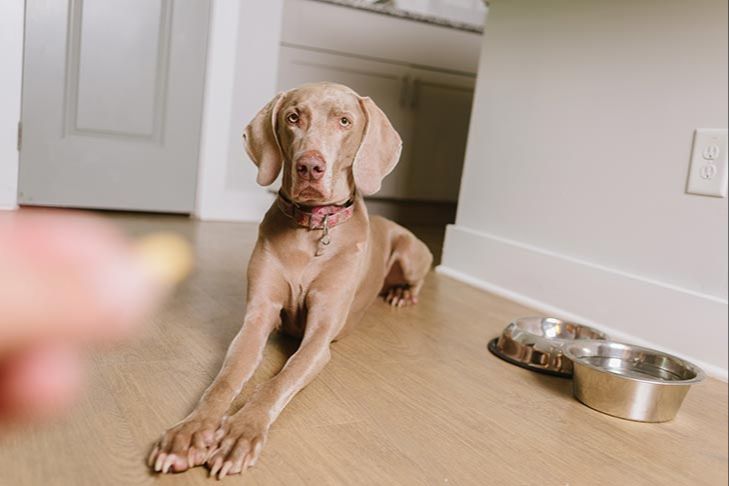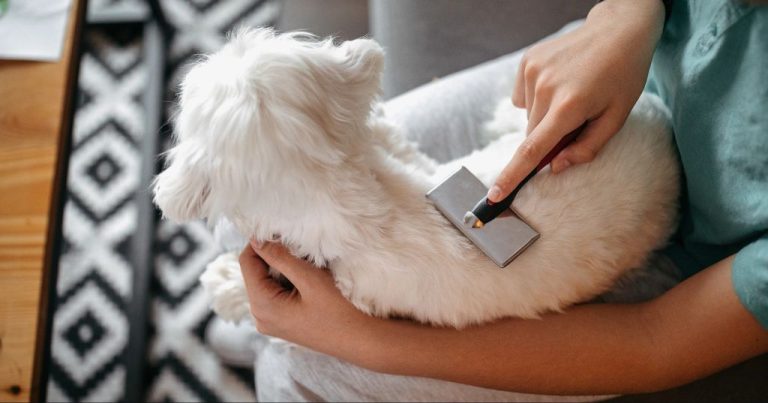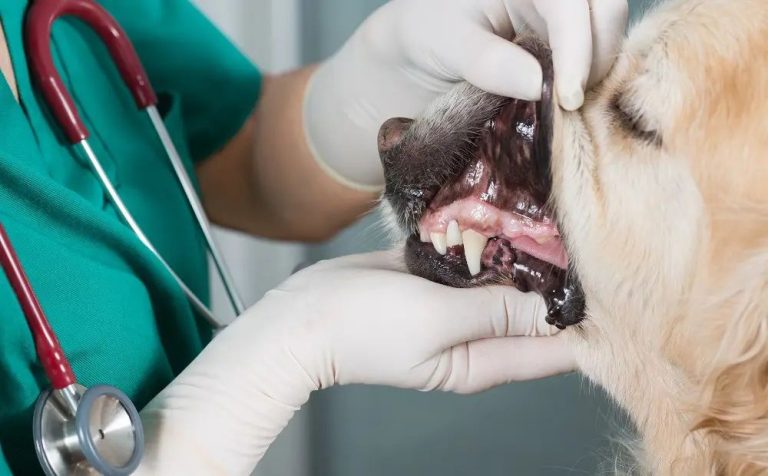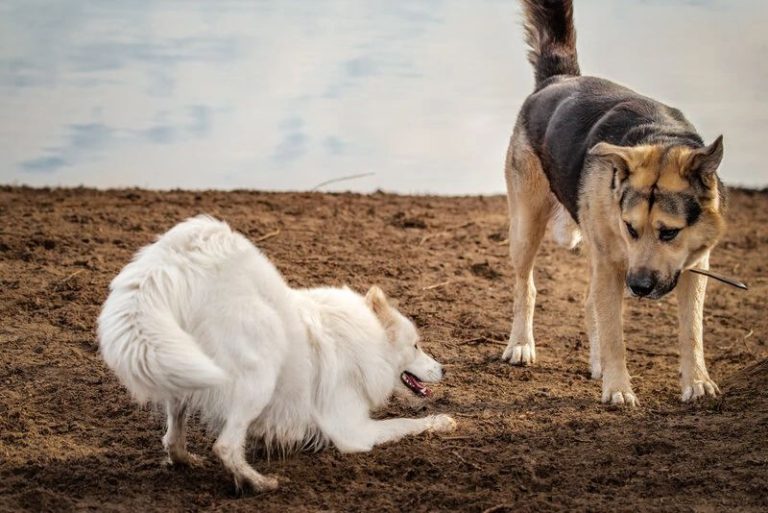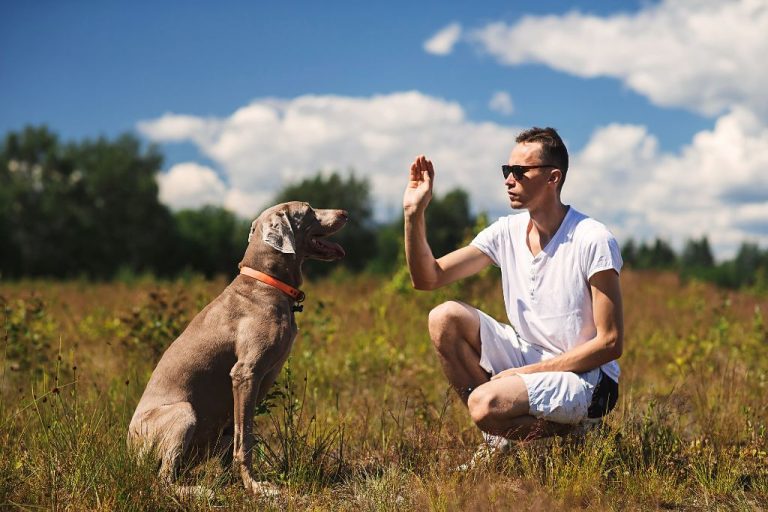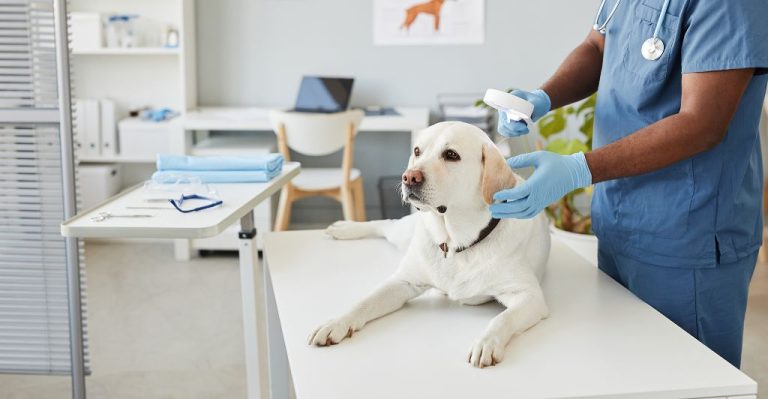The Complete Beginner’S Guide To Puppy Socialization And Training
Puppy socialization and training are vital aspects of raising a happy, well-adjusted dog. Socialization refers to the process of exposing puppies to new people, places, animals, environments and experiences in a gradual, controlled, positive way during the critical period of development. This allows puppies to gain confidence and learn proper dog behaviors rather than developing fears or unwanted habits later in life.
According to Longwood Veterinary Center, “Pet socialization is important for many reasons. Socializing your dog ensures its ability to react to the world in a healthy way, without fear or aggression.” [1] Proper socialization and training lays the foundation for a puppy to grow into a friendly, sociable and obedient adult dog.
This guide covers the development stages in a puppy’s life, preparations before bringing home a new puppy, early socialization techniques, tips for handling and training, establishing house rules, common health issues to look out for, and ways to keep a puppy happy and enriched. The goal is to provide readers with comprehensive information to properly socialize and train a puppy from the start for a rewarding lifelong bond.
[1] https://longwoodvetcenter.com/pet-socialization-raising-a-well-adjusted-dog/
Puppy Development Stages
Understanding the developmental stages a puppy goes through is critical for proper socialization and training. There are key periods during a puppy’s first 12 weeks when it is primed to learn behaviors that will stick with it for life.
According to the AKC, the most influential period is between 3-12 weeks old, as this shapes future behavior patterns and learning [1]. Some key developmental milestones during this time include:
- 3-5 weeks: Primary socialization period where puppies learn dog-to-dog social skills
- 5-7 weeks: Curiosity period where puppies explore new things
- 7-9 weeks: Refinement period for learning bite inhibition
- 8-11 weeks: Fear imprint period where puppies may develop lifelong fears
Exposing puppies to a wide variety of people, places, sounds, and situations during this crucial window is essential to raising a well-rounded, socialized dog. Owners should take advantage of each developmental stage to set their puppy up for success.
Preparing for a New Puppy
Bringing a new puppy home is an exciting time, but it requires some preparation and planning. Puppy proofing your home and gathering essential supplies ahead of time will help make the transition smooth for both you and your new furry friend.
Start by evaluating your home from a puppy’s perspective. Remove or secure any items they could chew on or get into, like electrical cords, houseplants, medications, and small objects. Block access to any unsafe areas. Install pet gates at the tops and bottoms of stairs. Make an area with adequate space for eating, sleeping, and playing.
You’ll also want to stock up on necessary puppy supplies before your new arrival. This includes food and water bowls, a crate and bedding, collar and leash, toys for mental stimulation and chewing, grooming tools, potty training aids, and cleaning products for accidents. Having these essentials ready will make your first days at home easier.
Additionally, find a trusted veterinarian and schedule your puppy’s first vet visit. Establishing a relationship with a vet early on is important for checkups, vaccinations, and any health issues that may arise. Discuss heartworm, flea, and tick prevention plans as well.
Taking the time to prepare your home, gather supplies, and choose a vet sets you and your puppy up for success. With some planning, you’ll both be able to settle in smoothly and start bonding right away.
Early Socialization
Early socialization is a crucial part of raising a well-adjusted puppy. The most important socialization period is from 3 to 16 weeks old. During this time, you should introduce your puppy to as many new people, animals, environments, noises, and handling as possible. This will help prevent behavior problems and build confidence.
Start with introducing your puppy to new people regularly. Let acquaintances, friends, neighbors, and strangers interact with your puppy (as long as they are healthy). Give them treats to feed the puppy and have them gently handle paws, ears, mouth etc. Teach children how to properly interact with the puppy (A Social Schedule – Puppy Socialization Checklist).
Also socialize your puppy with other vaccinated puppies and friendly adult dogs. Introduce them on neutral territory like a park or class. Supervise play and don’t allow bullying. Socializing with cats, farm animals, and other species can be done too if safely possible.
Additionally, start taking your puppy to new environments like parks, stores, car rides, elevators and public transportation. Have them experience walking on various surfaces. Expose the puppy to everyday sights and sounds, as well as loud noises like vacuum cleaners, doorbells, alarms etc. Desensitize them by pairing with treats.
Make handling, grooming and restraint a positive experience. Touch paws frequently, inspect teeth, brush, bathe, and trim nails. Play with ears and tail. Teach commands like “give paw”. Reward toleration of restraint with treats. Check Puppy Socialization Checklist for detailed handling tips.
Preventing Behavior Problems
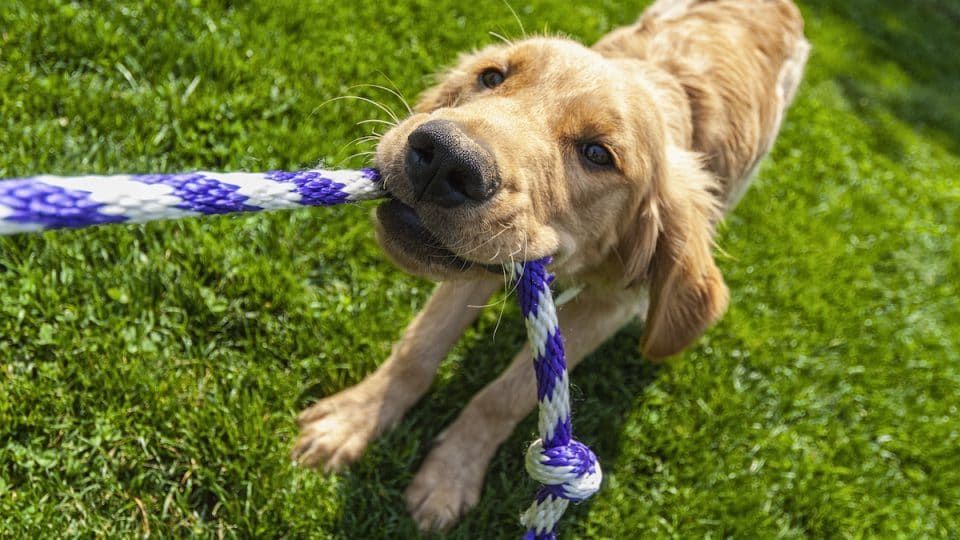
Preventing undesirable behaviors in puppies takes dedication, patience and consistency. Here are some of the most common puppy behavior issues and how to prevent them from becoming ingrained habits:
Nipping
Puppies explore the world with their mouths, so nipping and mouthing is normal puppy behavior. However, it’s important to teach bite inhibition from an early age. When puppies play too rough, give a high-pitched “ouch” and stop engaging. Praise gentler play. Redirect chewing to appropriate toys. With consistency, puppies learn to play without hurting people. For more severe biting, check out this advice from the AKC: How to Curb Unwanted Dog Behaviors.
Housetraining
Housetraining requires diligent supervision, routine and positive reinforcement. Take puppies out frequently and praise for going in the right spot. Clean accidents thoroughly with enzyme cleaner. Limit access when unsupervised. Crate training assists housetraining by capitalizing on dogs’ instinct to keep dens clean. VCA Hospitals has a housetraining guide here: Puppy Behavior and Training – Dealing with Undesirable Behavior.
Crate Training
Crate training utilizes a dog’s den instincts to encourage good behavior. Make the crate comfortable with bedding and toys. Use treats to reward entering the crate. Slowly increase duration in the crate. Avoid using it solely for punishment. With positive associations, most puppies quickly enjoy their crate for naps and quiet time.
Separation Anxiety
Puppies prone to separation anxiety may whine, bark or destroy items when alone. Prevention involves slowly conditioning puppies to be alone through desensitization training. Give brief absences then treats upon return. Slowly increase duration alone. Provide exercise, toys and a comfortable area pre-departure. Separation anxiety may persist, so consult a trainer if problems continue.
Obedience Training Basics
Teaching basic obedience commands is an essential part of puppy training and socialization. Focus on the core commands of sit, stay, come, leash walking, and leave it during initial obedience training. Keep training sessions short, positive, and rewarding with treats and praise to encourage good behavior.
The sit command teaches your puppy to plant their bottom on the ground on cue. Use a treat to lure your puppy into a sitting position, say “sit,” praise and reward. Keep practicing this in various locations and with distractions to solidify it. According to the AKC, teaching sit helps establish control and patience in your puppy (Source).
Stay means your puppy should remain in place until you release them. Start with sit, say “stay”, take a step away, then return and reward. Gradually increase the duration and distance. Stay teaches impulse control. Your puppy will want to follow you but should learn to wait instead.
The come command calls your puppy back to you. Start close, say “come” excitedly, reward when they reach you. Increase distance slowly. Practice coming when called away from distractions. Coming when called is an important safety command, so reward it highly. Always positively reinforce coming to you.
Proper leash walking manners are achieved through positive reinforcement training. Reward your pup walking calmly beside you. If they pull, change direction and motivate them back to your side with a treat. Be patient, leash walking takes time to master. Keep sessions short and upbeat.
Teaching leave it helps reinforce impulse control. When your puppy shows interest in something they shouldn’t have, say “leave it” and reward them when they step away from the object. This command helps deter inappropriate chewing and eating of harmful or unpleasant items.
Advanced Training
Once your puppy masters the basic obedience commands like sit, stay, come, and down, you can move on to more advanced tricks to continue challenging your pup mentally and physically. Some classic advanced tricks to teach include heel, drop, roll over, and play dead.
Teaching a reliable heel teaches your puppy to walk closely by your side on leash, without pulling or lagging behind. Start training heel in a low distraction area, using treats to lure your puppy into the correct position next to you. Use a command like “heel” or “let’s go” and walk forward a few steps, rewarding your puppy for staying in position. Increase the number of steps over multiple training sessions until your puppy reliably heels for longer distances.
The drop command tells your puppy to lay down from a sit or stand. Start by putting your puppy in a sit or stand position. Hold a treat at their nose level while giving the “drop” command, then lower the treat straight down to the floor. As your puppy follows the treat down, mark and reward. Repeat until they learn to lay down on just the verbal cue.
To teach roll over, start with your puppy in a down position and hold a treat by their shoulder/front leg. Slowly move the treat across their chest and lure their nose to follow, while using a command like “roll over.” Mark and reward once they complete the full roll. Build up slowly until they can roll all the way over on just the verbal cue.
Play dead is a classic trick that’s amusing yet simple to teach after your puppy knows the down command. While your puppy is in a down, gently roll them onto their side while saying “bang” and your marker word like “yes.” When they remain on their side, reward with a treat. Over many repetitions, phase out the physical prompting so your puppy flops over on just the verbal “bang” cue. Make sure to give an release command like “take a bow” so they don’t stay down too long.
House Rules
Setting clear house rules and boundaries is crucial for raising a well-behaved puppy. Consistency is key – everyone in the household should reinforce the same rules. Focus on the most important rules first:
No jumping – Do not allow your puppy to jump on people. Turn away from them and ignore jumping until they sit calmly. Reward with attention and treats when all 4 paws are on the floor. Teach an alternative behavior like “sit” instead of jumping.
No counter surfing – Never leave food unattended on counters or tables. Block access to counters and reward the puppy for sitting calmly in the kitchen. Teach them “off” or “leave it” commands.
No furniture – Puppies should not be allowed on furniture until they consistently listen and obey house rules. Provide them with a comfortable dog bed on the floor instead. Reward them for laying calmly on their own bed.
Schedule/routine – Puppies thrive on routine. Set up a consistent schedule for feeding times, potty breaks, training sessions, play time, walks, and crated downtime.https://www.akc.org/expert-advice/training/how-to-create-house-rules-for-your-new-puppy/
Common Puppy Health Issues
A puppy’s immune system is still developing during their first year of life, making them vulnerable to certain illnesses. Vaccinating against the most common diseases (based on risk and your veterinarian’s recommendations) is crucial to protect your pup’s health.
Some of the most common puppyhood vaccines help prevent dangerous viral infections like parvovirus, distemper, adenovirus and rabies. Bacterial diseases like kennel cough/bordetella and leptospirosis also have important vaccines. Your vet will advise on the recommended schedule for these core vaccines and any other non-core vaccines based on your puppy’s lifestyle and disease risks (source).
Intestinal parasites like roundworms, hookworms, tapeworms, coccidia and giardia are very widespread in puppies. A stool test and deworming are crucial to both diagnose and treat parasites before they make your puppy ill. Some flea/tick treatments also protect against common worms (source).
Puppies are naturally curious explorers and may try to eat rocks, socks, plants or other inappropriate objects. This could cause an intestinal blockage or poisoning. Keeping harmful items out of reach, confining your puppy when unsupervised and training a strong “leave it” cue are important to prevent emergency vet visits.
Keeping Your Puppy Happy
One of the most important things you can do for your puppy is keep them happy and mentally stimulated. This involves providing adequate physical and mental exercise, playtime with toys, and quality time with family.
Puppies have a lot of energy and need regular opportunities to run around and play. Take your puppy on multiple walks and play sessions throughout the day. Playing games like fetch, tug-of-war and chase are great ways to engage your puppy physically and mentally. Allowing your puppy to socialize and play with other dogs is also very beneficial.
Provide your puppy with chew toys to satisfy their natural chewing instinct. Rotate different types of chew toys to keep them interesting. Stuffed Kongs and treat dispensing puzzle toys are great for mental stimulation as well. Work on training sessions daily to engage your puppy’s mind through learning new behaviors and commands.
Make sure your puppy gets plenty of affection and quality time with family members. Set aside periods throughout the day for playtime, cuddles and training. Dogs are social animals that need interaction and bonding experiences. A happy, well-adjusted puppy needs sufficient physical exercise, mental stimulation, playtime and bonding opportunities.
With a little time and effort, you can keep your puppy entertained, exercised and feeling loved. A mentally and physically tired puppy equates to a happy, well-behaved companion.

